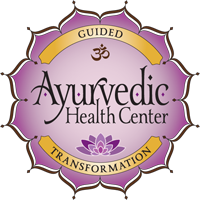
What is Ayurveda?
The Science of Life
Ayurveda is the traditional holistic healing system of India. Often called the mother of all healing, it originated over 3,000 years ago in the Indian sub-continent and is the longest continually-practiced form of medicine on the planet.
The roots of ayurveda stem from the ancient vedic culture. The word, Ayurveda, is a conjunction of two Sanskrit words: ayur “life” and veda “knowledge.” So, “Ayurveda” is a Sanskrit word that translates to “the knowledge and wisdom of life.” Ayurveda is the ancient science of how to live a long and healthy life.
Ayurveda works through an understanding of natural patterns, rhythms, and cycles. Living in harmony with the rhythms of nature maintains and promotes health, while living a life disconnected from those cycles leads eventually to imbalance and disease.
Ayurveda works at a root cause level instead of chasing symptoms. By addressing imbalances where they started (usually the gut), Ayurveda can effectively restore balance and clear up other myriad issues.
Constitution
Ayurveda works from an understanding that each of us is unique. In the West, we talk about this in terms of DNA. In Ayurveda we talk about constitution or Prakruti. The constitution is a combination of three doshas (Vata, Pitta, and Kapha); it is a body-mind type that determines and describes your innate strengths, tendencies, and challenges.
Knowing your Ayurvedic constitution is a road map for health and wellness. It tells you where you are and how you can most easily get to where you want to be. Working with the knowledge of your constitution is essential to developing—and maintaining—optimal health. Knowing your constitution (and making appropriate choices) means that you can avoid imbalance and illness.
An Ayurvedic practitioner determines your constitution by doing an intake that typically includes an in-depth health history, inquiring into your patterns around digestion and elimination, looking at your tongue, assessing your pulse, noting physical characteristics that relate to the doshas, and forming an understanding of your consciousness.
With all of this information in hand, a host of personalized recommendations can be made that will support and guide your wellness.
To get an idea of your constitution, take our dosha quiz.
The Five Elements & The Three Doshas
According to Ayurveda, everything in the universe is composed of five elements. They are: space, air, fire, water, & earth. Each person has a unique proportion of all five elements; some elements are more present than others, but we all have all five of them.
- earth is our bones, muscles, and fascia — our structure and support
- water is the many fluids in our bodies — our lubrication medium of exchange
- fire is the force of warmth and metabolism — our digestion and transformation of one thing into another
- air is all the movement — the flow of blood through vessels, the movement of thought, the transmission of neurotransmitters
- space is what holds and contains and allows for the other elements to the pulse of filling and emptying
The five elements come together in three dynamic biological forces known as the doshas: Vata, Pitta, & Kapha.
Since we all have all five elements in us, we also all have all three doshas present within us. As with the elements, the proportion of these doshas is unique to each of us.
- Some people have a single dosha that predominates in their make-up. Such a person would be called a Vata (or Pitta or Kapha) type.
- Some people have two doshas that predominate in their make-up. We call them a Vata-Pitta, Pitta-Kapha, or Vata-Kapha type.
- Some other people have all three dohas pretty equally present. They are called Tri-doshic types.
None of these types is better or worse than another. They all have their inherent strengths and challenges.
Vata Dosha
Vata is a combination of the space & air elements. It governs all movement.
Vata individuals typically have:
- dry skin
- a slight body frame
- cold hands and feet
- brittle nails
- coarse kinky hair
- quick movements
- talkativeness
- hyperactivity or variable stamina
- darker skin and eyes
Vatas are usually:
- creative
- enthusiastic
- energetic
- inspiring
Vatas can tend towards:
- worry
- fear
- anxiety
- confusion
- gas
- constipation
- muscle cramps
- joint pain
- insomnia
Pitta Dosha
Pitta is a combination of fire & water elements. It governs transformation, metabolism and digestion.
Pitta folks have:
- higher body temperatures
- strong appetites
- sharp minds
- light colored hair
- light-sensitive eyes (often hazel or green)
- oily skin and hair
- strong organizational skills
- competitive natures
- athletic builds
Pittas are usually:
- courageous
- intelligent
- focused in their work
Pittas can tend towards:
- anger
- criticism
- judgment
- indigestion
- heartburn
- inflammation
- diarrhea
- itchy skin rashes
Kapha Dosha
Kapha is a combination of earth & water. It governs structure and lubrication.
Kapha individuals have:
- curvy bodies and facial features
- smooth skin
- broad features
- Kaphas have:
- large eyes
- good hair
Kaphas tend:
- to move slowly
- be happy right where they are
Kaphas tend to be:
- loving
- nurturing
- compassionate
- nostalgic
Kaphas can tend towards:
- attachment
- congestion
- weight gain
- edema
- sluggishness
Resources
- You can take our dosha quiz to get an idea of your constitution.
- You can also take a look at our many resources (doshic tip sheets, doshic food lists, recipes, etc.) for more information.

